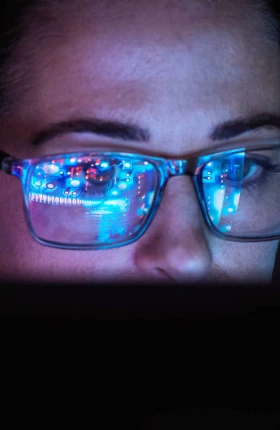Technology is transforming economies and societies throughout Southeast Asia, but the tech sector’s gender imbalance persists.
To understand this disparity—and identify potential solutions—BCG partnered with Singapore’s Infocomm Media Development Authority to conduct a comprehensive survey of about 4,000 individuals across six Southeast Asian countries: Indonesia, Malaysia, the Philippines, Singapore, Thailand, and Vietnam. We also interviewed more than 30 women in tech across the region. (This is a follow-up to a 2020 report we published on the gender disparity in tech in the region .)
Our analysis finds that the current state of gender diversity in technology across Southeast Asia is mixed:
- The share of women in technology across the six countries ranges from 34% to 40%—within a few percentage points of our 2020 results—reflecting moderate progress.
- Companies are taking greater strides to support women in tech; 70% of respondents in tech companies said that their company has initiatives to improve the recruitment, retention, and advancement of women—an increase of roughly 20 percentage points over our 2020 survey (49%).
- Job satisfaction levels among women who currently work in the sector are extremely high—83%—on a par with that of men who are their counterparts in tech and higher than the average for women in other industries.
- Southeast Asia has the highest proportion of women pursuing tech-related degrees, but the share of women in the tech sector is only on a par with global averages.
Four Moments of Truth
Our research identifies underlying issues across four key moments of truth in a woman’s technology career, including in both technical roles—particularly those requiring deep expertise (such as software engineer)—and leadership positions.
Choosing to Study Technology. The decision to pursue a technology degree sets the stage for a future career in the tech industry. Our data reveals a wide variance across countries in the proportion of women enrolled in tech-related courses, from 36% in the Philippines to 58% in Malaysia. Our survey finds that early exposure to technology is important at this key moment: Gen-Z women who were exposed to technology before their university enrollment are 27% more likely to pursue a tech-related degree.
Embarking on a Technical Career. At this critical juncture, a noticeable gap exists: women constitute less than 30% of the applicants for entry- and executive-level technical positions across the six Southeast Asian countries. Furthermore, less than half of women graduates with tech-related degrees—a natural pool of talent for technical roles—choose to enter such roles. Our survey reveals that the prevailing perceptions of technical roles, such as being dominated by men and lacking work-life balance, are deterring women. Moreover, many women tend to lose interest in technology while pursuing a higher education.
Staying in a Technical Role. Nearly half of women respondents who are currently in a technical role are considering shifting to a nontechnical role. Across the six Southeast Asian countries, the primary factor for this change is salary, but many women also reported feeling stifled by the lack of a clear career path and a workplace culture that seems indifferent to the unique challenges they face. For instance, 32% of women in technical roles feel that their day-to-day work experience is not free of bias.
Advancing to Senior Leadership. The fourth and final moment of truth is advancing to a position of senior leadership. In these Southeast Asian countries, women account for only 23% of senior leaders in the top 50 tech companies, with just 8% in technical leadership roles. At this juncture, there’s a perception of subjective performance evaluations, with 30% of women in technical roles feeling that career-related decisions, such as promotions and stretch assignments, are not free of bias. However, having mentors and role models can help bridge this gap: women in technical roles are twice as likely to be promoted faster than their peers if they have a woman mentor.
Recommendations for Various Stakeholders
Many entities—including industry associations and governments—already support women with some baseline initiatives, including recruiting, mentoring, networking, and outreach programs to boost retention. While those are valuable and should continue, we feel that the additional steps below should be priorities.
- Schools and governments can cultivate and sustain an interest in technology among girls and young women by weaving technology into all facets of the curriculum, partnering with technology companies, and engaging parents on the journey. These entities can also support women who are keen to make midcareer transitions into technical roles by offering upskilling programs.
- Companies can support women who are embarking on technology careers by creating awareness of discrimination and bias in the workplace and by deploying targeted measures to mitigate prejudices. Companies can also design incentives for leaders that, in turn, help men take on more domestic responsibilities, support women re-entering the workforce after a break, and redesign career paths for technical roles.
- Senior leaders in tech can model inclusive practices, guide others to adopt inclusive practices, and engage in active mentorship and sponsorship.
- Aspiring girls and young women who want to pursue a career in tech, and women who are in tech, can proactively reach out to mentors and advisors, continually build their technical skill set, and be bold about taking chances and pursuing opportunities. In parallel, they can also actively share their perspectives and experiences not only to highlight issues and foster inclusivity but also to become role models for the next generation.












